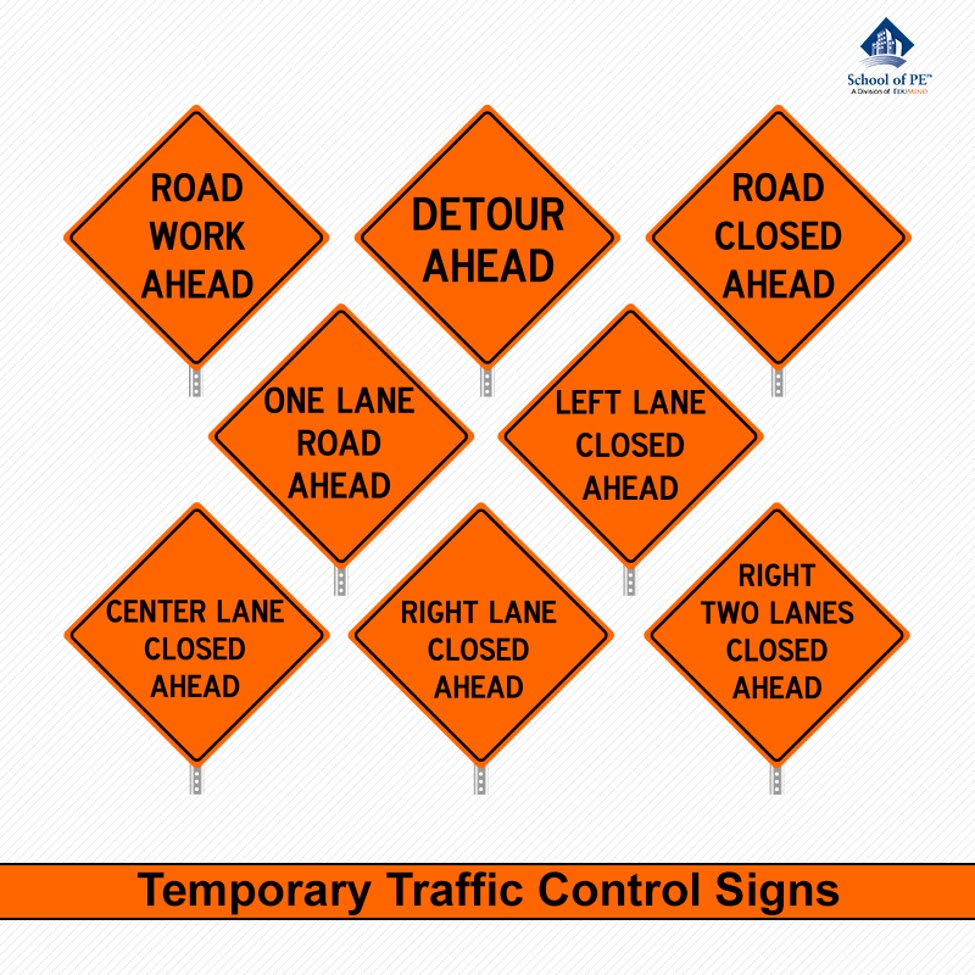The primary function of temporary traffic control is to provide road users-bicyclists, pedestrians, and vehicles-with safe conveyance and passage through roadway construction zones. It is also used to provide safety to workers and equipment. Traffic control design is the ability to communicate clear and concise information to road users when normal roadway activities are suspended. This is conveyed through the use of traffic control devices such as signs, symbols, pavement markings, channelizing devices, and traffic signals. The manual used to provide this standard is the Manual of Uniform Traffic Control Devices (MUTCD, 2009).
Part 6 of the MUTCD provides standard guidance for the design and implementation of temporary traffic control devices. Signs are typically the first temporary traffic control device seen by road users. Sign colors are orange and black and provide an advanced warning that normal traffic operations will be altered. These signs are, in essence, warning signs but for temporary use. Multiple signs are used in some instances and placed at specific distances apart based on speed and geographic location of the roadway. Regulatory signs are also used in temporary traffic control operations to convey messages. Channelizing devices such as cones or drums are also commonly used temporary traffic control devices that direct the flow of traffic safely through the work zone. Other devices may include temporary traffic signals used at temporary intersections (such as at the construction entrance to the road), message boards and attenuators used on higher speed facilities, and temporary pavement markings used on more long-term projects such as lane additions. These devices are used together to provide a well-balanced, informative system for safe passage by road users. Temporary traffic control devices should never be overused. Drivers can become overstimulated, increasing the risk of driver error.

Temporary traffic zones are composed of several components. The advanced warning area is used to tell traffic what is ahead. The transition areas are used to move or shift traffic away from the normal path. The activity area is composed of an optional buffer space to provide additional protection for equipment and workers and the workspace where the actual roadway operation is being performed (such as pavement patch repair or utility work in public right of way). The last part of the temporary traffic control zone is the transition area, where traffic begins to shift back into normal traffic operations.
There should be extensive strategic planning and design consideration before implementing temporary work operations. This produces driver unfamiliarity and the potential for serious collisions. A temporary traffic control plan is developed by designers and engineers and must be stamped by a licensed professional and approved through the office of the governing jurisdiction of the road (county, state, or municipal) before implementation. Site-specific plans are usually developed based on guidance by the MUTCD, which provides 46 typical design configurations for the placement of signs, markers, barricades, and channelizing devices (such as shoulder work, work in the center of an intersection, and detours through urban areas).
No comments :
Post a Comment